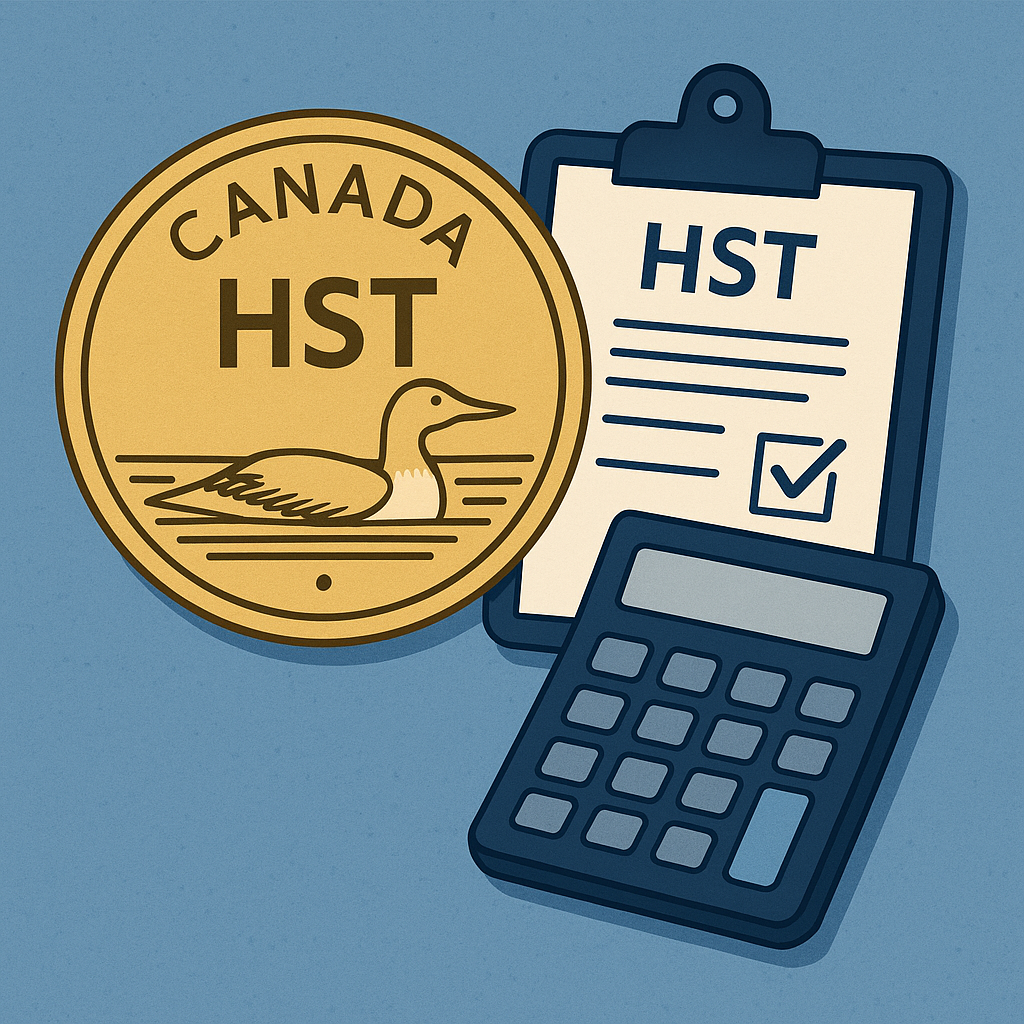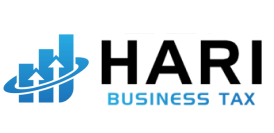HST (Harmonized Sales Tax) in Canada
In this guide, Gondaliya CPA breaks down everything you need to know about Harmonized Sales Tax (HST).
Request a Free Consultation

What is HST?
Harmonized Sales Tax (HST) in Canada mixes two taxes into one. It joins the Goods and Services Tax (GST) and the Provincial Sales Tax (PST). This combined tax makes things easier for people buying or selling stuff in some provinces. HST applies to most goods and services there. It works as a single value-added sales tax, so businesses and customers deal with just one tax instead of two.
Here’s what HST does:
- Combines GST and PST into one tax
- Applies in certain provinces only
- Covers most goods and services
- Simplifies tax rules for buyers and sellers
HST vs. GST/PST: Key Differences
GST stands for Goods and Services Tax. It is a federal tax across all of Canada. GST has a fixed rate of 5%. On the other hand, PST means Provincial Sales Tax. Each province sets its own PST rate. For example, British Columbia has its own PST separate from GST.
HST combines these two into one tax system. Both federal and provincial governments get part of this tax. This way, businesses don’t have to handle two different taxes. They just charge and report HST.
Key points:
- GST is federal; PST is provincial
- PST rates change by province
- HST merges GST and PST in some provinces
- Both government levels share revenue with HST
Who pays HST?
If a business makes enough money, it must register for HST with the Canada Revenue Agency (CRA). These businesses then charge customers HST on taxable sales in participating provinces. They also collect this tax to send to the government.
Businesses can claim back some HST they pay when buying taxable goods or services for their work. This helps avoid paying extra tax twice.
Here’s who pays and how:
- Businesses over certain revenue limits must register for HST
- They charge HST on most sales in certain provinces
- They collect the tax to pass on to CRA
- Can claim input credits on their business purchases
Hmm, if you need help with this stuff, Gondaliya CPA offers support with registering and filing your taxes right. Working with them can reduce mistakes when dealing with HST rules.
Current HST Rates by Province
The Harmonized Sales Tax (HST) in Canada mixes the federal Goods and Services Tax (GST) with the Provincial Sales Tax (PST) into one tax. This happens only in some provinces. It makes sales tax easier to handle for businesses and shoppers.
Right now, five provinces use HST with different rates:
- Ontario: 13%
- New Brunswick: 15%
- Nova Scotia: 15%
- Prince Edward Island: 15%
- Newfoundland and Labrador: 15%
These rates include the 5% GST plus the provincial part together. Businesses in these provinces must charge HST on goods and services that are taxable.
Provinces Using HST: A Historical Overview
HST came to combine two taxes—the federal GST and each province’s PST—into one simple system. The first province to start this was New Brunswick back in 1997. After that, Newfoundland and Labrador, Nova Scotia, Ontario, and Prince Edward Island joined in.
This change helped businesses deal with just one tax instead of two. The tax is collected federally but shared between the federal government and provinces. That made it easier for companies to follow the rules.
Provinces Without HST: An Overview
Some provinces don’t use HST. They keep GST and PST as separate taxes or only use GST alone:
- Quebec has its own Quebec Sales Tax (QST), which works separately from GST.
- British Columbia tried a combined system called HST but went back to separate GST and provincial sales tax.
- Manitoba, Saskatchewan, Alberta (no provincial sales tax), Northwest Territories, Nunavut, and Yukon also do not use HST.
In these places without HST, businesses must charge two taxes—5% GST plus whatever provincial sales tax applies based on local rules.
Gondaliya CPA helps businesses across Canada with registering for the right sales taxes like HST or PST. They guide clients on filing returns using current rates so they follow all rules correctly.
HST Registration: When is it Required?
If your business sells taxable goods or services in Canada and makes more than $30,000 over four calendar quarters, you have to register for Harmonized Sales Tax (HST). This rule applies to most small businesses, including sole proprietors and corporations. Once you hit this limit, you must sign up with the Canada Revenue Agency (CRA). After that, you need to collect and send HST on sales made in provinces like Ontario, Nova Scotia, New Brunswick, Newfoundland and Labrador, and Prince Edward Island.
Benefits of Voluntary Registration
- You can claim Input Tax Credits (ITCs) on the HST you pay for business expenses.
- This helps lower your overall tax costs.
- It also improves your cash flow by getting money back.
- Registered status builds trust with customers who expect proper taxes.
- It gets your business ready to grow without delays.
So even if you don’t meet the sales limit yet, registering voluntarily makes sense.
How to Apply for an HST Number
- Provide legal info about your business like name and address
- Tell CRA what type of business activity you do
- Give an estimate of your yearly taxable sales
You can apply online on CRA’s website or call them. Once approved, CRA sends you an HST number linked to your BN. You must use this number on all invoices where you charge HST.
HST Filing Requirements and Deadlines
| Reporting Frequency | Annual Revenue Threshold | Filing Deadline |
|---|---|---|
| Monthly | Over $6 million | Within one month after period end |
| Quarterly | Between $1.5 million – $6 million | Within one month after period end |
| Annually | Under $1.5 million | Three months after fiscal year-end |
Make sure to file on time because late returns can cause penalties or interest charges.
Input Tax Credits (ITCs) and How to Claim Them
Input Tax Credits let businesses get back the HST paid on purchases tied directly to their commercial activities. To claim ITCs:
- Keep receipts that show GST/HST amounts paid
- Confirm expenses relate only to taxable supplies your business makes
- Report ITC claims accurately when filing your regular return
By claiming ITCs, you lower the net tax owed by offsetting taxes collected with those already paid.
Gondaliya CPA helps businesses with all steps of HST—from deciding if registration is needed and applying for numbers—to handling filings correctly while making sure input tax credits are used well. Their help keeps companies in line with CRA rules and avoids costly mistakes or delays in taxes.
HST on Purchases: Operating, Research, Capital & Special Funds
Harmonized Sales Tax (HST) in Canada joins the federal GST and provincial PST into one tax. This makes tax collection easier across certain provinces. Businesses pay HST when buying things like operating supplies, research stuff, capital assets, and special funds. To follow the rules, businesses must file their taxes right and send payments to the Canada Revenue Agency (CRA) on time. They can also claim input tax credits. These credits let businesses get back the HST they paid, lowering their overall tax bill.
Here’s what you should keep in mind:
- Pay HST on purchases related to your business.
- File tax returns accurately.
- Send payments promptly to CRA.
- Claim input tax credits to recover some taxes paid.
HST on Sales of Goods and Services
Most taxable goods and services sold in certain provinces come with HST. These provinces include Ontario, New Brunswick, Nova Scotia, Prince Edward Island, and Newfoundland and Labrador. If your business sales go over a set amount, you must register for HST with the CRA. After registration, you get a business number (BN). This number is used for all your tax stuff. Then, you have to charge customers HST on taxable sales at the right rate. Collecting this tax properly means you follow Canadian tax laws.
Important points about selling with HST:
- Register for HST if sales cross thresholds.
- Get a business number from CRA.
- Charge correct HST rates to customers.
- Keep good records of taxes collected.
HST on Invoices and Receipts
If your business is registered for HST, your invoices and receipts must show clear details about the tax. Each invoice should have:
- The amount before taxes,
- The exact HST rate or the amount of HST charged,
- Your business number (BN) given by CRA.
This helps both sellers and buyers keep proper records. Buyers can use these details to claim input tax credits if they qualify.
Gondaliya CPA helps businesses with all steps of their HST duties—from registering with CRA to filing returns correctly—making sure there are no mistakes or late filings.
HST on Imported Goods and Services
Harmonized Sales Tax (HST) in Canada applies to most goods and services that you import. If your business passes certain tax limits, you must register for HST with the Canada Revenue Agency (CRA). After registering, you need to charge and collect HST on taxable sales, including imports used for business. Filing your HST returns right is very important to follow CRA rules. You must send in your payments on time too. Missing these steps can lead to penalties or interest charges.
Here’s what you should remember:
- Register for HST if your sales pass thresholds
- Charge and collect HST on imported goods/services used commercially
- File HST returns accurately
- Remit collected taxes on time
HST on Sales Between Business Units
HST merges the federal GST and provincial PST into one tax in some provinces. When different parts of a company sell things to each other, those sales might have HST if they involve taxable items. If your business passes revenue limits, you must register for HST with the CRA and get a business number (BN). Having this number helps when charging or claiming input tax credits on sales between units.
Key points to keep in mind:
- HST combines GST and PST in participating provinces
- Sales between business units may have HST if taxable supplies are involved
- Register for HST once revenue thresholds are met
- Obtain a business number (BN) from CRA
HST on Travel & Expense Claims (Canada & International)
Businesses can get back some of the taxes paid on travel and expense claims under the HST rules. This includes trips inside Canada and abroad. You can claim input tax credits to lower the taxes you pay. But be careful — your expense records must match CRA rules exactly. Professional help can guide you through registering, filing deadlines, and staying compliant with changing laws.
Remember this about travel expenses:
- Claim input tax credits where allowed for travel and expenses
- Keep good documentation matching CRA guidelines
- Get support for registration, filing, and compliance
Gondaliya CPA helps businesses with all parts of HST compliance—from registering to filing—to avoid mistakes or late payments that cause trouble.
Gondaliya CPA: Simplifying HST Compliance

Harmonized Sales Tax, or HST, combines federal and provincial sales taxes in some Canadian provinces. If your business sells taxable goods or services there, you have to charge and collect HST. Then, you send that tax to the Canada Revenue Agency (CRA). To do this right, you must register for an HST account using your business number (BN). You also need to file tax returns on time and report taxes correctly.
Gondaliya CPA helps with all parts of HST compliance. We assist with registration and prepare your tax returns carefully. We help you meet filing deadlines and guide you through the rules so you don’t miss anything. Our support helps businesses avoid penalties and keeps tax management running smoothly.
Frequently Asked Questions about HST
What is Harmonized Sales Tax (HST)?
HST mixes the 5% federal Goods and Services Tax (GST) with a provincial tax into one rate. Provinces like Ontario, New Brunswick, Nova Scotia, Newfoundland and Labrador, and Prince Edward Island use it.
How does HST differ from GST and PST?
GST is a 5% federal sales tax across Canada. Provincial Sales Tax (PST) is different and applies separately in some provinces. HST merges GST and PST into a single rate collected by CRA.
Who must register for HST?
If your business makes more than $30,000 a year from taxable sales, you must register for an HST account with CRA using your BN. This lets you charge customers properly and claim input tax credits.
What are input tax credits?
Input tax credits let businesses get back the HST they pay on things bought for their business. This lowers the total amount of tax they owe when filing returns.
Contact Gondaliya CPA
Got questions about registering your business number (BN)? Need help with CRA filing deadlines? Or want to know how to charge HST on sales? Gondaliya CPA offers clear advice on these topics. Contact us for support that keeps your Harmonized Sales Tax handling accurate and up to date.
Frequently Asked Questions about HST and Gondaliya CPA
What services does Gondaliya CPA provide for HST compliance?
Gondaliya CPA offers comprehensive assistance with HST registration, accurate tax filing, and ongoing compliance support.
How does Gondaliya CPA help with tax return preparation?
They prepare HST tax returns carefully to meet CRA standards and avoid errors or delays in filings.
Why is timely remittance important for HST payments?
Timely remittance helps avoid penalties and interest charges on late HST payments to the CRA.
How can Gondaliya CPA support ongoing compliance with Canadian sales tax legislation?
They keep businesses updated on changes in tax laws and ensure filings follow current CRA rules.
What benefits come from accurate tax filing for HST?
Accurate filing reduces audit risks, prevents penalties, and ensures proper input tax credit claims.
Gondaliya CPA: Key Benefits for Your Business Tax Needs
- Comprehensive assistance with all HST matters from registration to filing
- Expert tax return preparation that meets CRA requirements
- Ongoing compliance support to stay updated with Canadian sales tax legislation
- Guidance on timely remittance of collected taxes to avoid fines
- Accurate tax filing ensuring correct calculation and reporting of HST
- Professional help to maximize input tax credit claims legally and efficiently
Gondaliya CPA helps your business manage HST smoothly while staying compliant.

Sharad Gondaliya CPA Canada and CPA USA having 14 Years+ experience of Accounting, Tax, Payroll of Corporate Small Businesses as Tax Accountant. He is fully certified CPA Ontario and CPA USA. He is well known amoung Corporate Small Businesses for Tax Planning, efficient Tax solutions and for Affordable CPA services, He is Principal (Director) at Gondaliya CPA – Affordable CPA in Canada.




